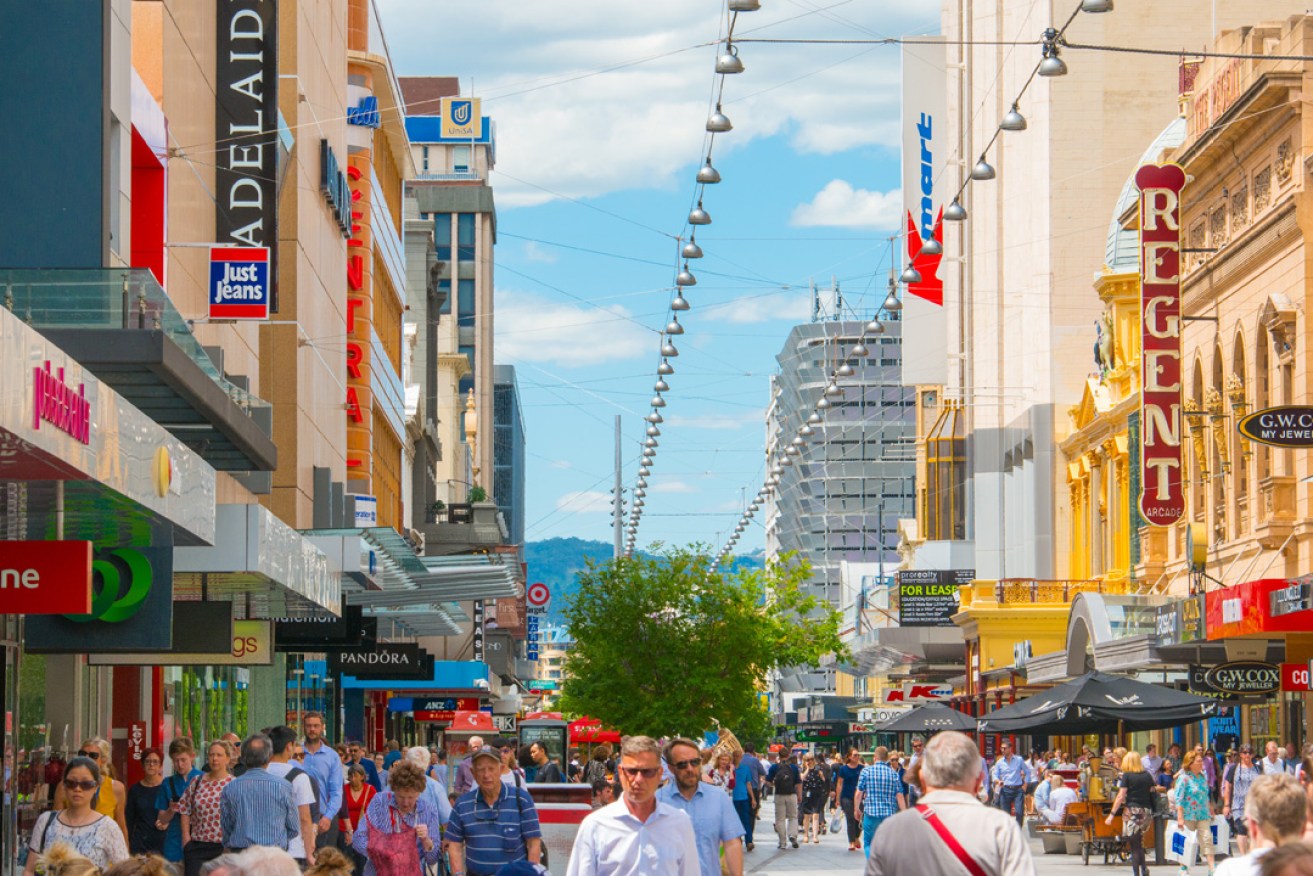Dining out revival amid record SA shopping splurge
South Australians splashed out a record $2.112 billion on retail in February as spending in cafes, restaurants and takeaway outlets across the nation soared past pre-pandemic levels.


The 3.1 per cent jump on January’s retail trade figure for SA followed a similar rise last month after a pre-Christmas spending slump, according to seasonally adjusted figures released this week by the Australian Bureau of Statistics.
Nationally, month-to-month spending was up 1.8 per cent in February to $33.08 billion, 9.1 per cent higher than February 2021.
The 3.1 per cent increase in South Australia was second in the nation behind New South Wales (3.9 per cent) while retail spending in Western Australia (-2.9 per cent) and the NT (-3.8 per cent) went backwards.
Spending in department stores across Australia was up 11.1 per cent while the clothing, footwear and personal accessory category rose 11.2 per cent.
Australians spent a record $4.465 billion in cafes, restaurants and takeaway shops for the month, an increase of 9.7 per cent on January and up more than $500 million on February 2020, just before the coronavirus pandemic.
However, food retailing at shops such as supermarkets fell by $340 million, or 2.6 per cent for the month, unwinding most of the gains during the Omicron outbreak.
The South Australian total retail spend was up $63.3 million on January and eclipsed the previous record, set in November, by $53 million in seasonally adjusted terms.
It also came at a time when the Adelaide CBD was still impacted by lingering work from home directives that were only lifted on February 28 by the state government.
ABS Director of Quarterly Economy Wide Statistics Ben James said nationally the February figure was second only to November’s record as spending continued to regain lost momentum caused by the peak of the Omicron outbreak in January.
“Lower COVID-19 case numbers in February, alongside the further easing of restrictions over the month, saw consumer spending return to similar behaviour seen previously as states and territories come out of a COVID-19 wave,” he said.
“Most discretionary spending industries experienced strong rises once again as consumer cautiousness lessened, leading to an increase in mobility and improved business conditions. On the other hand, non-discretionary industries, such as Food retailing, saw their turnover contract this month.”
A new experimental monthly household spending series from the ABS based on banks’ transactions data showed spending in hotels, cafes and restaurants in South Australia in January 2022 fell due to the impact of omicron and implementation of activity restrictions.
Spending for the month dropped by 16 per cent compared to December, which compares with an average decline of 6.4 per cent over the previous two Januarys in 2021 and 2020.
South Australian Centre for Economic Studies honorary research fellow Michael O’Neil said many people stayed home in January as the first wave of Omicron peaked and restrictions re-introduced on December 26 were still in place, which was reflected in high household savings.
“It opened up a lot more in late January and I think that what we are seeing is some of that pent-up demand coming to the fore and I think the March figures will still be quite high as well,” he said.
“Expenditure in the hotels, cafe, restaurant category has suffered over the past two years, it was very subdued, but now they are starting to trade back to normal.”
JLL this week reported that the positive uplift in retail trade in November resulted in significant employment growth in the retail sector in SA.
It said there were about 96,100 people employed in the sector in November – a 4.1 per cent or 3800 increase on pre-COVID-19 levels.
According to JLL, Rundle Mall vacancies in the second half of 2021 decreased to 7.6 per cent, the lowest level since 2019.
“This recovery in occupier demand along Rundle Mall has been supported by a sharp rebound in South Australian consumer spending in the discretionary retail categories of fashion and dining out,” JLL’s South Australia Retail Leasing Executive Chantelle Ardalich said.




